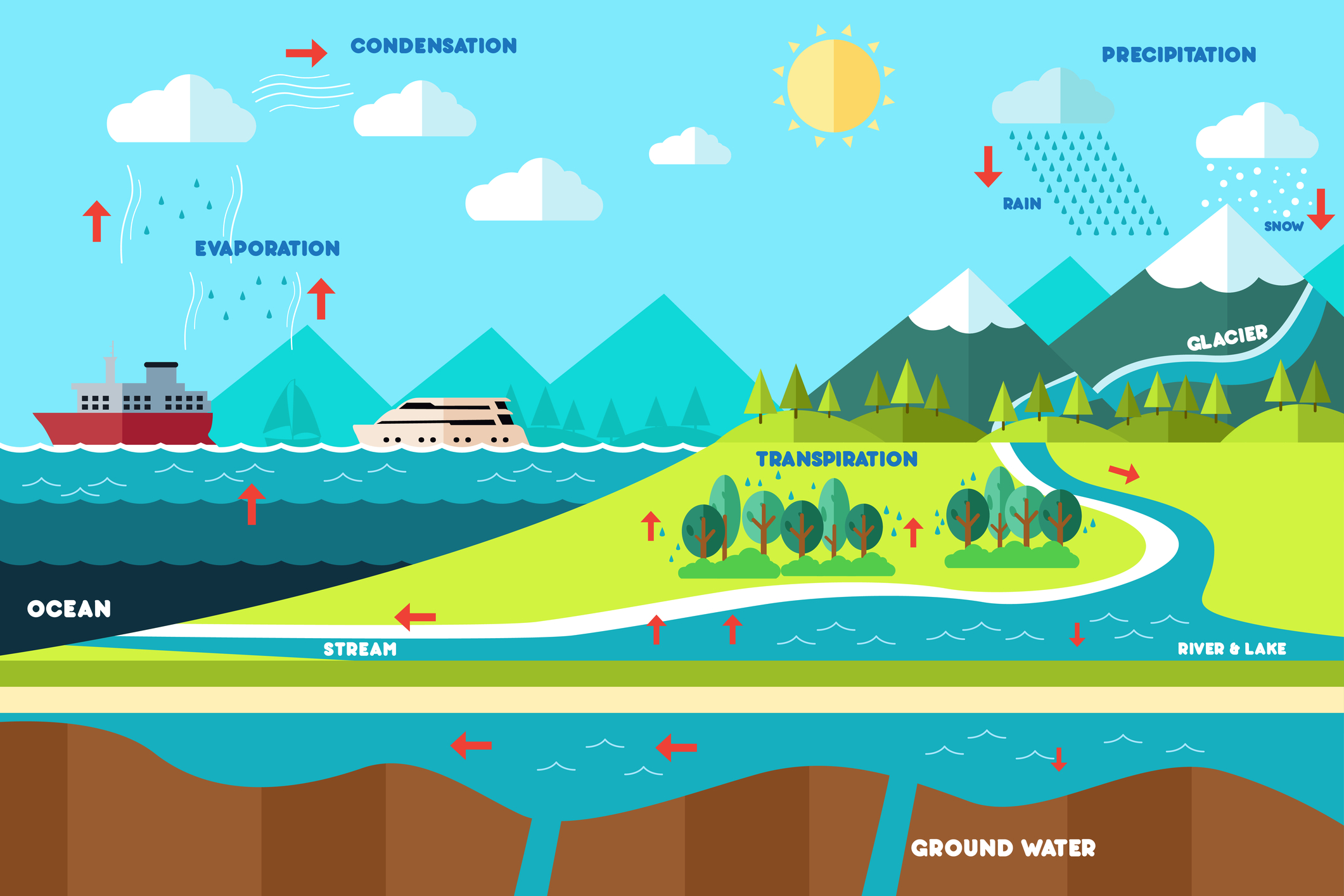WATER CYCLE
When analyzing the Water Cycle, we find three (3) major systems:
- oceans and large bodies of water (the source of water);
- the atmosphere (the deliveryman of the water);
- the soil (the user of the water).
The Watershed serves as a terrestrial support for surface water and groundwater. This is the ideal delineation for understanding and analyzing the hydrological cycle and its effects.
Aerial part of the water cycle
- Evapotranspiration: Water restored to the atmosphere by the combined action of evaporation and transpiration of plants.
- Condensation: Process by which the water vapor changes to a liquid or solid state. For example, clouds result from the condensation of water vapor.
- Precipitation: Water, in liquid or solid form, released by clouds or deposited by moist air on the ground.

Terrestrial part of the water cycle
- Runoff: Precipitated water flowing to the soil surface without seepage or evaporation. Important phenomenon on bare soils.
- Infiltration: Movement, under the effect of gravity, of the water through the superficial layers of the ground and flow of this water in the soil and the subsoil. The infiltrated water can also join the groundwater. In this case, the term percolation is used.
- Groundwater: Water stored in the soil and supplying the sources.
- Storage in depressions: Water trapped in hollows and depressions during and after a shower. Eventually, this water will evaporate, infiltrate the soil or be used by vegetation.
- Interception: The portion of precipitation retained and captured by vegetation or buildings that will never reach the surface of the soil. This water will eventually evaporate. This phenomenon is a loss at the hydrological level.
The Watershed will react differently to the precipitation it receives depending on, among other things, the shape, size, slopes, soil type and density of the hydrological network. Another aspect of particular importance is the use of soil in the watershed. Different activities rub shoulders in the watershed: residential, agricultural, forestry, industrial, etc. These activities have an impact on water dynamics in the watershed. Thus, vegetation cover greatly influences the erosion that can occur since there is a direct link with precipitation interception and soil stabilization.
In an urban environment
Impermeable surfaces prevent infiltration into the soil, increasing runoff and the rate of response of the watershed. This results in a rapid rise in the level of watercourses.
In an AGRICULTURAL setting
The vegetation cover may vary. When soils are protected by vegetation, the impact of raindrops is less. However, when soils are exposed, runoff can be significant and cause erosion. The arrangement of plants also plays a role. For example, runoff will be greater in a corn field where the plants are aligned than in a grassland where the layout is random.
In the FORESTRY environment
The vegetation cover will intercept some of the precipitation thus limiting runoff and consequently erosion.
*Text taken from Our lakes beneath the surface.
CONTACT INFO
TURNKEY PROJECT SERVICE
We are proud to offer a turnkey project service, from drilling your new artesian well to selecting and installing your pump and water treatment equipment.
WATER ANALYSIS
Do you think you have a problem with the quality of your water? Do not wait, ask for a water test today.
CERTIFICATION
Certification in drinking water
R.B.Q. License: 8266-3618-21
Also a proud member of A.P.C.H.Q. and A.E.S.E.Q.
